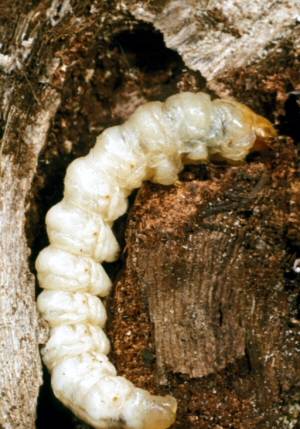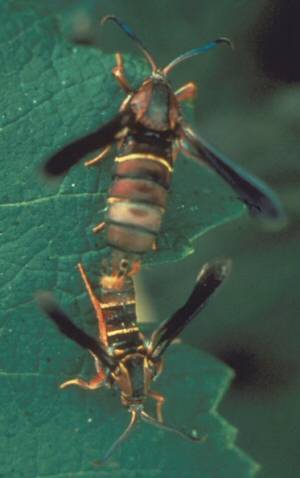Grape Root Borer
 Scientific Name
Scientific Name
Vitacea polistiformes
Host
Larvae of this insect feed on wild and cultivated grapes.
Symptoms
This borer injures plants by feeding extensively on the root system. Because of its location, initial damage may be difficult to detect or diagnose until the plants become severely damaged. Tunnels will increase in size as the larvae grow. Grape root borer larvae have chewing mouthparts and use their strong mandibles to feed on root tissue. Feeding by this insect causes the plant to slowly decline and eventually wilt from the disruption of the vascular tissues that transport water and nutrients. If canes begin to decline and then set new leaves and put out new canes, then the damage is not likely from grape root borer. Leaves from infested plants will wilt and entire canes will begin to die.
Life Cycle

Description
Adult grape root borers resemble paper wasps but are actually moths. There are several similar species found in and around grapes, and these are often attracted to and trapped in grape root borer pheromone traps. Adult males, which are attracted to the pheromone traps, are wasp-like in appearance and possess four pencil-like tufts (claspers) at the end of the abdomen. Two of these tufts are about twice as long as the other two. These may not be preserved in pheromone sticky traps. An additional characteristic that may be noticeable on captured moths is the single, thin, yellow band running across the upper part of the abdomen. Forewings of this species are mostly brown opaque; the hindwings are transparent. The eggs are deposited on leaves, stems or on the ground by the female, which can lay about 300-400 eggs. Mature larvae are ivory white, unmarked and almost legless. They have a distinctive square profile, with the head end being somewhat thickened and armed with strong, brown mandibles.
Control
Please contact your local county extension office for current information.

